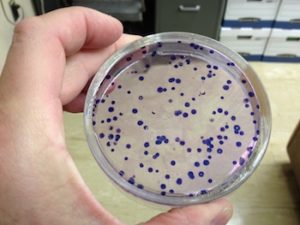
October is National Brest Cancer Awareness Month, and the HeLa cancer cell discovered in 1951 is celebrated.
Life is studied at the atomic and molecular scale in molecular biology, biochemistry, and molecular genetics. It is also studied at the level of the cell in cell biology. In biological and medical research, a HeLa cell is a cell derived from cervical cancer cells. A HeLa cell was taken from a Black woman named Henrietta Lacks.
This cell line was propagated for use in cancer research. Initially, the cell line was said to be named after "Helen Lane" to preserve Lacks's anonymity. The cells proliferate abnormally rapidly, even compared to other cancers. HeLa cells have been transformed by the human papillomavirus 18 (HPV18) and have different properties from normal cervical cells. They are used as model cancer cells and for studying cellular signal transudation. HeLa cells have proven difficult to control. They sometimes contaminate other cell cultures growing in the same laboratory, interfering with biological research.
The degree of contamination is unknown because few researchers test the identity or purity of already-established cell lines. It has been claimed that a substantial fraction of in vitro cell lines is HeLa, their original cells having been overwhelmed by a rapidly growing population derived from HeLa contaminant cells. It has been estimated that the total mass of HeLa cells far exceeds that of the rest of Henrietta Lacks' body. Some researchers have debated that these cells are a separate species because they reproduce and spread independently; in 1991, it was named and described as Helacyton gartleri.
On Oct. 4, 1951, Henrietta Lacks died of cervical cancer at Johns Hopkins University Hospital in Baltimore. However, Lacks will live forever in laboratories and research centers worldwide that use her unique, immortal cells for medical research. The HeLa cells of her cancer were the first human cells discovered to thrive and multiply outside the body, seemingly forever, allowing researchers to conduct experiments previously impossible.